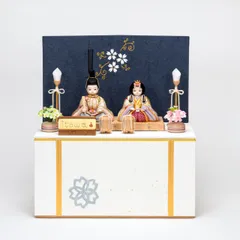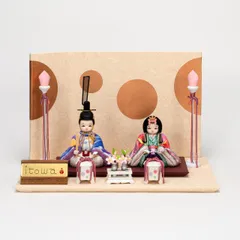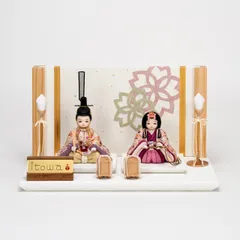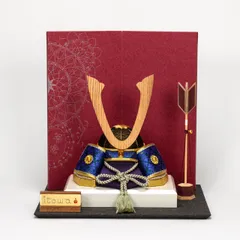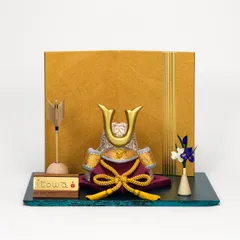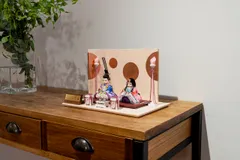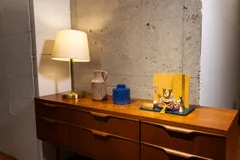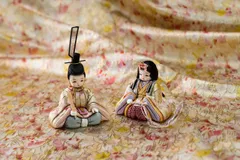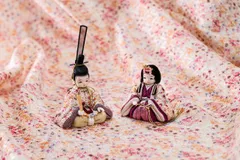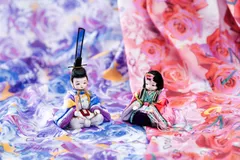Kakinuma Ningyo K.K., the Edo Kimekomi Dolls, Announces New Series of Dolls Clad in European Dress Fabrics Hina Dolls and Kabuto Available in Limited Quantities
Kakinuma Ningyo K.K.
Kakinuma Ningyo K.K. has announced a new series of "itowa" Sekku dolls, "Traveling itowa" using textiles made in France and Italy and textiles that evoke the image of Europe. dolls (Kabuto) will be sold in limited quantities as new items.
"Traveling itowa" special page: https://itowa.tokyo/?mode=f26
Online store: https://itowa.tokyo/
Instagram : https://www.instagram.com/itowa_official/
X (former Twitter): https://twitter.com/itowa2020
Facebook : https://www.facebook.com/Itowa.Tokyo
YouTube : https://www.youtube.com/@itowa-rj2gd
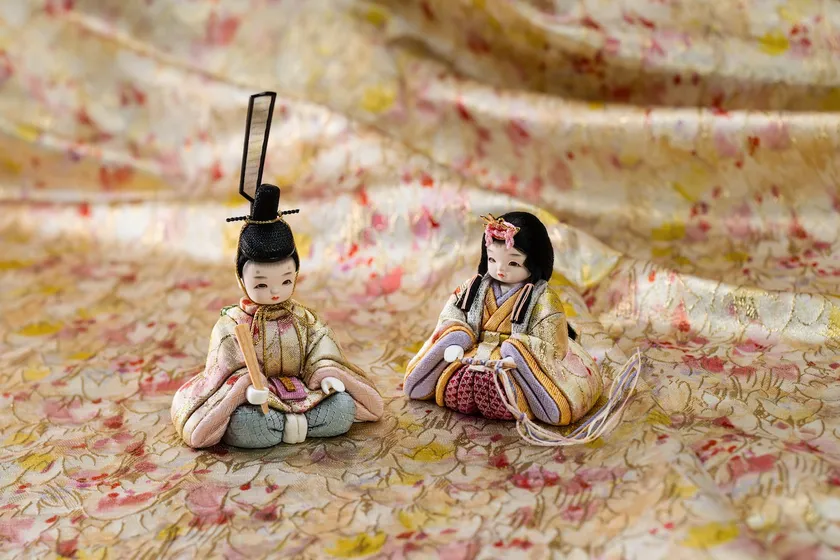
Shinnou-kazari "Yu-Yu" and fabrics
Toshimitsu Kakinuma used a dress fabric he encountered in Paris for the doll's costume. The dress fabric is designed to evoke a field of tulips.
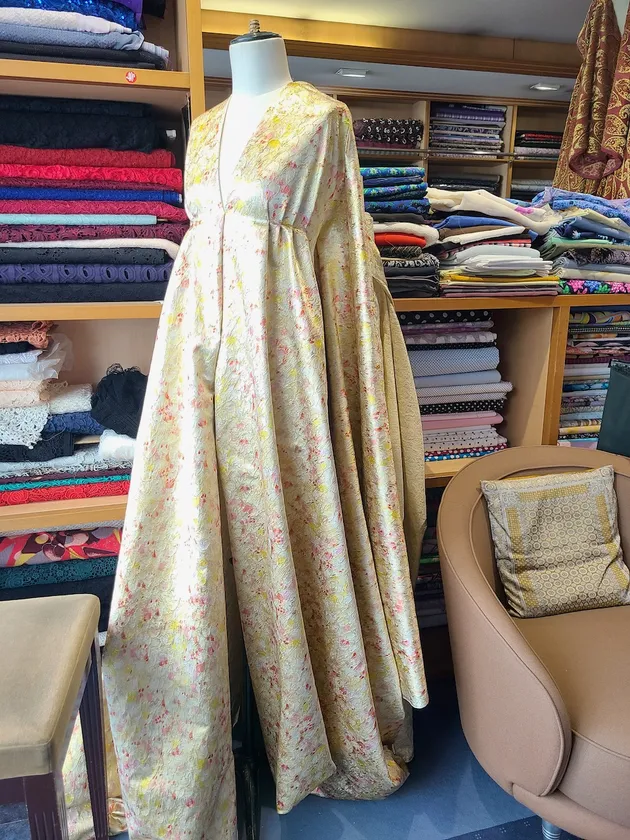
Fabrics displayed in a store in Paris
■The concept (thoughts) of "Traveling itowa"
As Toshimitsu Kakinuma, a traditional craftsman and producer of itowa, traveled around Europe, including France, Italy, and Germany, he suddenly saw the sky, flowers blooming in the streets, and a piece of cloth wrapped around a baby. The colors and shapes were different from those seen in Japan, but they were the colors of nature that soothed the hearts of the local people, and the colors of the cloth showed their deep love for the little ones.
Although Sekku Ningyo dolls are a part of Japanese culture, the wish for the healthy growth of one's own child is the same throughout the world. Thinking of the colors of the sky, flowers, and a piece of cloth that moved me when I traveled around Europe, I added the "Traveling itowa" series to itowa, wishing for the healthy growth of children all over the world.

"Traveling itowa" logo
Major differences from previous itowa products
The "Traveling itowa" series is a new addition to the itowa lineup in the hope that itowa will continue to grow and develop in the future.
The "Traveling itowa" series uses fabrics made in France and Italy and fabrics that evoke the image of Europe.
The ratio of the doll's eyes has been changed to make them look prettier than before.
Product Outline
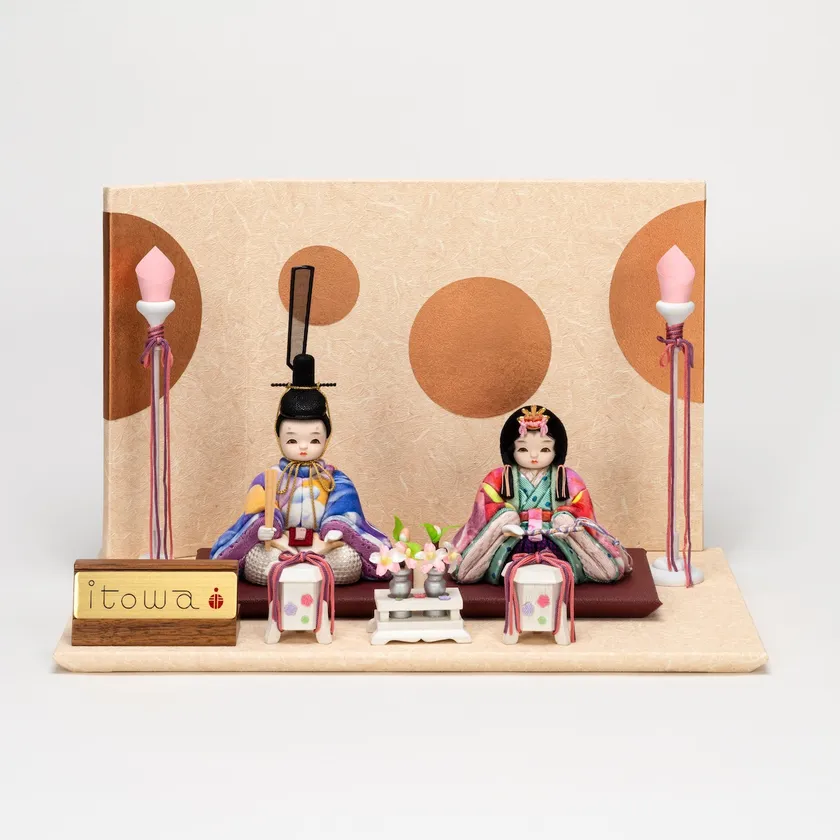
Shinnou-kazari "Co-Co"
Product name: "Co-Co"
Price : 101,200 yen (tax included)
Model Number :ha0512h017
Fabric : Italian jersey fabric with red and blue roses printed on it
Size : 30 x 20 x 19 cm
Other: Folding screen is a two-piece folding screen (large and small circles are stamped in red leaf, a kind of gold leaf)
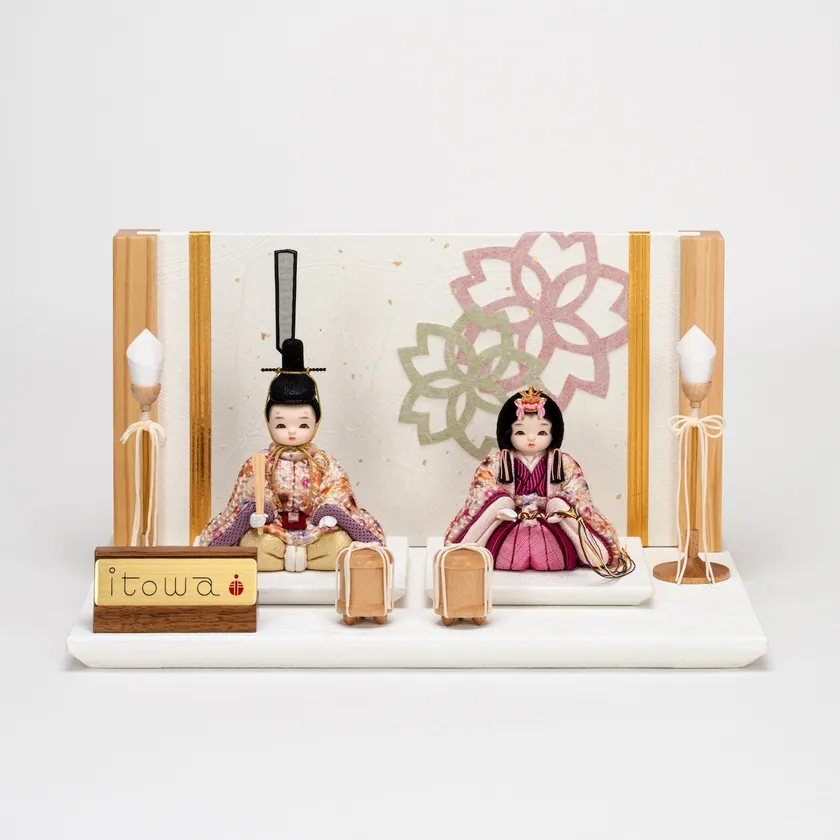
Shinnou-kazari "Ru-Ru"
Product name: "Ru-Ru"
Price : 102,300 yen (tax included)
Model Number :ha0512h016
Fabric :Italian tweed fabric with beautiful interlaced threads
Size : 30 x 20 x 16.5 cm
Other:Cherry blossom pattern on the impulse stand made of natural wood expresses the coming of spring
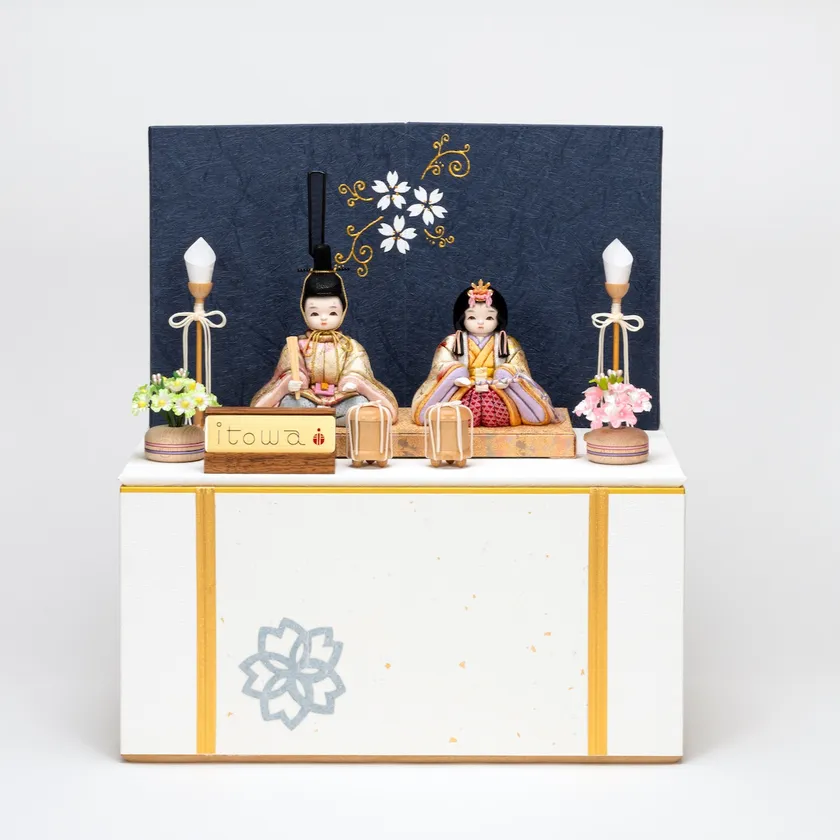
Shinnou-kazari "Yu-Yu"
Product name: "Yu-Yu"
Price : 115,500 yen (tax included)
Model Number : ha0512s018
Fabric :French dress fabric that producer Toshimitsu Kakinuma encountered in Paris,
producer Toshimitsu Kakinuma met in Paris.
Elegant design with tulip silhouettes trimmed with gold thread.
Size: 30 x 20 x 33.5 cm
Other: A "storage decoration" in which the stand doubles as a storage box.
The folding screen is a two-curved folding screen decorated with gilded cherry blossoms and arabesques.
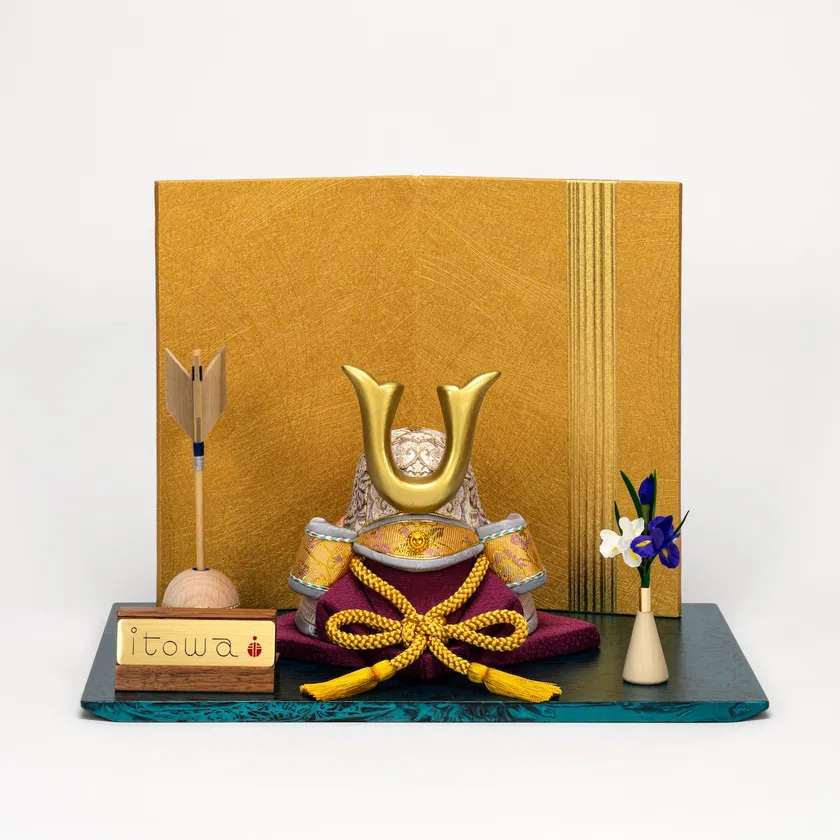
Kabuto "Yoh-koh"
Product name: "Yoh-koh"
Color : Purple
Price : 68,200 yen (tax included)
Model Number :ga05k1h004
Fabric :Nishijin fabric with European color scheme
Size :30 x 20 x 22 cm
Features :Kishu-nuri marble-patterned stand, two-curved gold folding screen
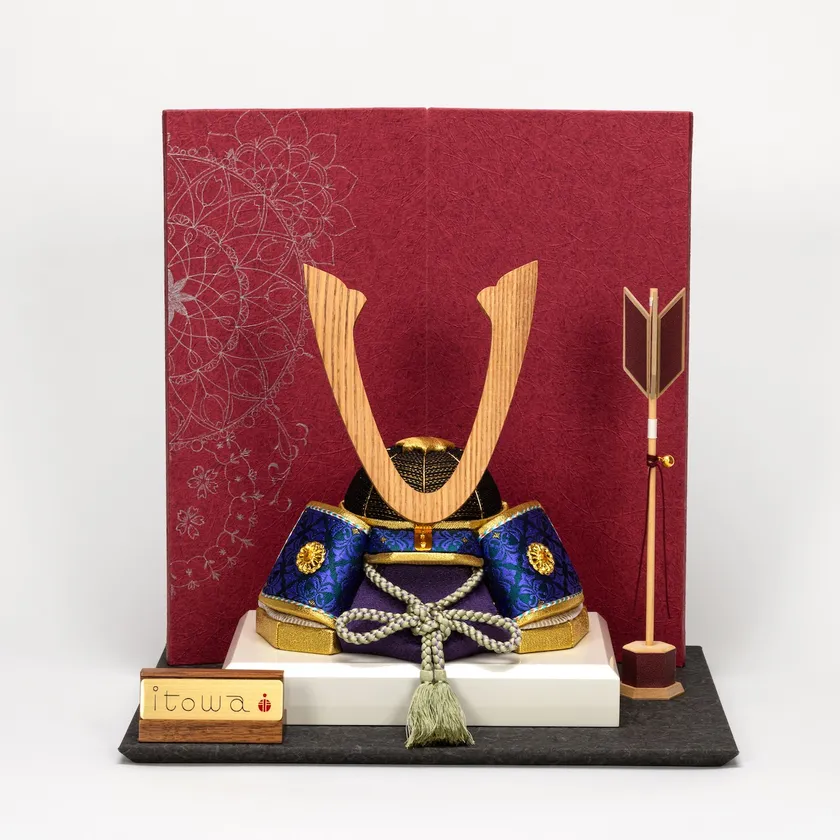
Kabuto "Kou-ki"
Product name:"Kou-ki"
Color : Blue
Price : 113,300 yen (tax included)
Model : ga05k1h011
Fabric :Nishijin brocade fabric with a pattern that gives the image of a coat of arms
Size :30×25×31 cm
Features :One of a part Kabuto "Kuwa gata" made of natural wood, Kabuto's cord made of Tokyo Kumihimo, a traditional craft
Enji-colored folding screen with two sections
Oriental patterns on the folding screen are hand-painted
The "Yatate", which highlights the graininess of the wood, is decorated with a bell.
What is Kimekomi Dolls?
"Kimekomi" is so called because a narrow groove is carved into the border between the folds of a costume and a piece of cloth, and the cloth is "kimekomi" there. It originated in Kyoto in the Genbun period (1736-41), about 270 years ago. According to a common belief, the origin of Kamo dolls dates back to the Genbun period (1736-41) in Kyoto, when a man named Tadashige Takahashi, who was in charge of miscellaneous work at Kamikamo Shrine at the time, made carved wooden dolls with leftover materials from the shrine's ritual utensils, and then kimekomi (carved wooden dolls) were made with the leftover rips from the shrine's costumes. These dolls were called "Kamo dolls", "Kamogawa dolls", and "Yanagi dolls" at the time, and later came to be called "Kimekomi dolls". As the Edo period developed, "Kimekomi dolls" were developed in the "Edo style" by doll makers who moved from Kyoto to Edo. Today, "Kimekomi dolls" are designated as "Edo Kimekomi Dolls," a traditional craft designated by the Minister of Economy, Trade and Industry, and are made mainly in Tokyo and Saitama.
Kakinuma Toshimitsu
Toshimitsu Kakinuma, a traditional craftsman of Edo Kimekomi dolls, is the creator of itowa Sekku dolls (Hina dolls、Kabuto). "itowa" was produced by Toshimitsu Kakinuma, who studied under Eiko Serizawa, a doll creator, and Toko Kakinuma, the second generation, from the age of 25 and has refined his skills and sensibility. In addition to the pattern and color matching of the costumes, the silhouette of the doll's plump face was chosen to match the concept of "gentleness," "love," "watchfulness," and "receptiveness". The eyes of the dolls are also carefully produced to match the concept of each doll.
Company Profile
Company name: Kakinuma Ningyo K.K.
Business description: Manufacturing and sales of Sekku (seasonal festival) dolls and Kimekomi products
https://www.kakinuma-ningyo.com/
Location: 2-13-2 Nishi-Ogu, Arakawa-ku, Tokyo (Head office)
- Category:
- Goods
